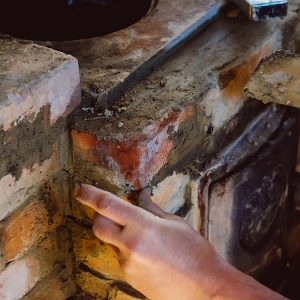How do you restore masonry?
Despite the durability of brick and mortar, all masonry is subject to wear and tear. A 100-year-old brick building may be structurally sound, or it may be on the verge of collapse. It all depends on how well the bricks were maintained and the type of stress they’ve had to endure. Let’s take a closer look at how masonry restoration works and what it takes to repair damaged bricks.

Identify the root cause of brick damage
The first step in masonry restoration is to determine if there are underlying issues at play. Is the brick damage simply from aging, or are there foundation issues to address? Are the bricks themselves crumbling, or is the wear contained to just the mortar? Our brick restorers evaluate all factors to create a custom plan for masonry restoration.
Gently clean the brick to restore its luster
If the bricks are in good condition, they may only need to be cleaned. This doesn’t mean you should rent a pressure washer and plow away at the siding. Most older brick requires a more delicate approach to remove dirt without damaging the structure. JK Industries uses soft wash techniques, as needed, to clean historic buildings with care and precision.
Replace damaged mortar (repointing)
Repointing is a process that removes the exterior layer of mortar and replaces it with new, color-matched mortar. The mortar around bricks is more porous and susceptible to damage than the bricks themselves. Thus, it may need to be replaced long before the bricks do. Securing the bricks with new mortar can extend their lifespan and fortify the structure as a whole.
Swap crumbling bricks with era-specific replacements
If there are spalled or cracked bricks on the structure, they need to be replaced. Finding the proper replacement is a bit of an art form, but we take our time to closely match replacement bricks for restoration. We find bricks that not only match the size, shape, color, and texture of the existing bricks, but also the era the building was constructed. This is the best way to create a seamless repair.
Seal the masonry to protect against future damage (not always ideal)
For some masonry restoration projects, we will add sealant to the bricks to shield them from future damage. This is not ideal for every building though. Some bricks need the ability to breathe and release moisture, while others do well with a shield across the surface. Once again, we can evaluate which option would be best for your brick restoration project.
